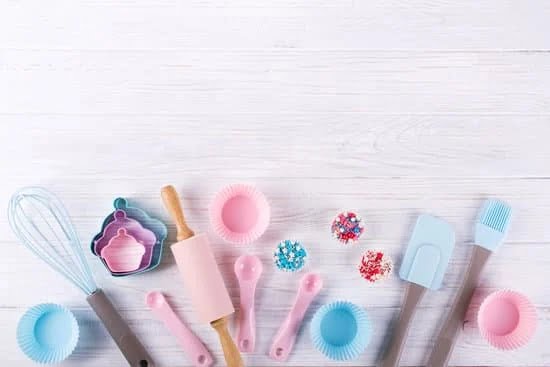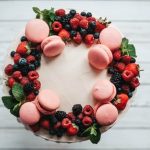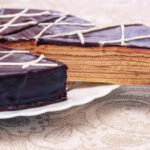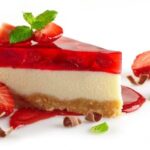Cake decorating is an art form that allows bakers to transform simple cakes into edible masterpieces. If you’re looking for fresh inspiration and innovative ideas to take your cake decorations to the next level, then look no further than How to Cake It Decorating Ideas.
In this blog post, we will guide you through the world of cake decoration using the How to Cake It method, offering step-by-step instructions, unique design ideas, expert tips and tricks, and troubleshooting advice.
At How to Cake It, we believe that cake decoration is more than just a finishing touch; it’s a way to express your creativity and showcase your individual style. Our goal is to empower bakers of all levels to explore their artistic potential through cake decorating. Whether you’re a beginner or a seasoned pro, there’s always something new to discover in the world of cake decoration.
In this article, we will start by providing a comprehensive step-by-step guide on mastering the basics of How to Cake It decorating. From creating perfectly smooth buttercream surfaces to achieving flawless crumb coating and leveling cakes for an ideal canvas – we’ve got you covered. We will equip you with the foundational techniques and tools needed for success in cake decoration.
But it doesn’t stop there. We’ll also delve into exploring unique How to Cake It decorating ideas that are sure to impress your family and friends. Get ready for out-of-the-box designs featuring sculpted realistic objects or gravity-defying creations that will leave everyone in awe. Imagination knows no bounds when it comes to How to Cake It.
No matter how skilled you become at cake decoration, there’s always room for growth. That’s why we’ll be sharing advanced tips and tricks that will elevate your skills even further. Learn about fondant sculpting, hand-painting techniques, intricate piping designs – the possibilities are endless.
So get ready for a journey into the world of cake decoration with How to Cake It Decorating Ideas. Let your creativity run wild as we explore themed creations for special occasions and discuss the latest trends in modern cake designs.
Through expert advice and inspiring examples, you’ll gain the confidence to create show-stopping cakes that truly reflect your unique style. So grab your apron, gather your decorating tools, and let’s get started on this delicious adventure together.
Step-by-Step Guide
When it comes to cake decoration, mastering the basics is essential for creating beautiful and professional-looking designs. The How to Cake It method provides a comprehensive approach to cake decorating that ensures success even for beginners. In this step-by-step guide, we will break down the foundational techniques and tools required for successful cake decoration.
First and foremost, achieving a smooth buttercream surface is key to creating a flawless canvas for your design. Start by applying a thin layer of buttercream as a crumb coat to seal in any loose crumbs on the cake. Once the crumb coat has set, apply another thicker layer of buttercream using an offset spatula. Use a bench scraper or a cake smoother to smooth out any imperfections and create an even surface.
Properly leveling your cakes is another crucial step in achieving professional-looking results. Begin by placing your cooled cakes on a level surface and use a serrated knife or a cake leveler to remove any domed tops. This will ensure that your layers stack evenly and create an ideal canvas for decorating.
In addition, understanding the importance of proper consistency when working with buttercream is vital. If the buttercream is too stiff, it will be difficult to spread smoothly, while if it is too soft, it will not hold its shape well. Adjust the consistency of your buttercream by adding small amounts of liquid (such as milk or water) for softer consistency or powdered sugar for stiffer consistency.
By following these step-by-step instructions and practicing these foundational techniques, you will be able to achieve beautiful and professional-looking cake decorations using the How to Cake It method. Remember that patience and practice are key in mastering these basic skills, so don’t be discouraged if your first attempts are not perfect. With time and dedication, you will become proficient in the art of cake decorating.
Unleashing Your Creativity
Sculpting Realistic Objects
One unique aspect of How to Cake It decorating is the ability to sculpt realistic objects out of cake and fondant. This opens up a world of possibilities for creating eye-catching and memorable cakes. From lifelike flowers and animals to intricate figurines and detailed replicas of everyday objects, the art of sculpting with cake allows decorators to showcase their creativity and skill.
To achieve realistic sculptures, it is essential to use high-quality fondant or gum paste that holds its shape well. Start by creating a solid base using cake or Rice Krispie treats, ensuring it is sturdy enough to support the weight of the sculpture. Then, shape your chosen object using reference images or molds. Remember to add smaller details, such as texture or color, using tools specifically designed for fondant modeling.
Gravity-Defying Designs
Another exciting way to unleash your creativity with How to Cake It decorating is by creating gravity-defying designs. These types of cakes give the illusion of objects floating in mid-air or defying gravity altogether. From floating tea cups and books to upside-down hanging fruit baskets, this technique never fails to impress.
When attempting a gravity-defying design, consider the weight distribution carefully. Determine which parts of the cake need internal supports or dowels to maintain stability. Use materials like PVC pipes or sturdy straws inserted into the cake layers for added support. Additionally, make sure your structure is secure before applying icing or fondant decorations.
Edible Paintings
For those who enjoy mixing artistic expression with baking, edible paintings offer a wonderful avenue for creativity in How to Cake It decorating. This technique involves hand-painting images directly onto blank canvases created from smooth buttercream surfaces or rolled fondant.
To create an edible painting, start by selecting food-safe paints such as gel food coloring mixed with a clear alcohol solution or food-colored cocoa butter. Begin painting using soft brushes, starting with the background and working your way to the foreground. Remember to blend colors and build layers for depth and dimension. With practice, decorators can create breathtaking edible artworks that truly become the focal point of their cakes.
By exploring these unique How to Cake It decorating ideas, you can create show-stopping cakes that leave a lasting impression on anyone who sees them. From sculpting realistic objects to creating gravity-defying designs and even incorporating hand-painted scenes, the possibilities are endless. So let your imagination run wild and enjoy the process of bringing your cake decoration ideas to life.
Elevating your Skills
In this section, we will delve into advanced tips and tricks for elevating your skills in How to Cake It decorating. While the basics provide a strong foundation, these techniques will push your cake decoration to the next level and allow you to create intricate and impressive designs. Whether you aspire to be a professional cake decorator or simply want to challenge yourself with more complex projects, these advanced techniques are sure to inspire your creativity.
One of the most important skills to master in advanced cake decoration is fondant sculpting. Fondant allows you to create detailed and realistic designs that can bring any cake to life. From sculpting figurines and animals to creating intricate textures and patterns, fondant sculpting opens up a world of possibilities. The key to successful fondant sculpting is practice, patience, and attention to detail. Start with simple shapes and gradually work your way up to more complex designs.
Hand-painting is another technique that can add stunning visual effects to your cakes. With hand-painting, you have the freedom to create custom designs and artwork that are unique to each cake. The key here is precision and control over the brush strokes. Practice on a separate surface before attempting it directly on the cake. Use food-safe paints or gel colors mixed with clear alcohol like vodka or lemon extract for best results.
Intricate piping designs can also take your cake decorating skills up a notch. Mastering piping allows you to add intricate details and delicate patterns that can truly impress your guests. Experiment with different piping tips and practice controlling the pressure applied while piping. From elegant borders and lace designs to elaborate flowers and scrollwork, there are endless possibilities with piping.
| Advanced Tips | Tricks |
|---|---|
| Fondant Sculpting | – Start with simple shapes
|
| Hand-painting | – Use food-safe paints or gel colors mixed with clear alcohol
|
| Intricate piping designs | – Experiment with different piping tips
|
Themed Creations
Creating themed cakes is a great way to add a personalized touch to special occasions. Whether it’s a birthday, wedding, holiday, or anniversary, incorporating a theme into your cake design can make the celebration even more memorable. With How to Cake It decorating ideas, you can unleash your creativity and create stunning cakes that perfectly match the occasion.
When it comes to themed creations, there are endless possibilities. You can choose a specific color scheme that relates to the event or incorporate elements that represent the theme. For example, for a tropical-themed birthday party, you can create a cake with vibrant colors like turquoise and coral and decorate it with edible flowers and palm leaves made out of fondant.
Another fun idea for themed creations is to incorporate cake toppers or edible decorations that align with the event’s theme. For a wedding cake, you can add miniature bride and groom figurines on top or use small edible pearls to mimic the look of an elegant necklace. And for a children’s birthday party, consider adding their favorite cartoon character as a cake topper.
| Theme | Idea |
|---|---|
| Baby shower | Create a cake in the shape of a baby stroller with fondant accents in pastel colors. |
| Halloween | Design a spooky graveyard cake complete with tombstones and eerie decorations made from icing. |
| Christmas | Make a festive yule log cake covered in chocolate ganache and decorated with holly leaves and berries. |
Whether you choose to follow a specific theme closely or add subtle touches, themed creations are a fantastic way to make your cakes stand out and impress your guests. With How to Cake It decorating ideas, you can take your cake decoration skills to the next level and create stunning masterpieces for any special occasion.
Incorporating Trends
In the world of cake decorating, staying up-to-date with the latest trends is essential to create modern and visually stunning designs. Incorporating these trends not only keeps your creations fresh and exciting but also allows you to showcase your skills in adapting to new styles. In this section, we will explore some popular cake decorating trends and how you can incorporate them into your How to Cake It designs.
Drip Cakes
One trend that has taken the cake decorating world by storm is the drip cake. These cakes feature a luscious drip effect created with ganache or colorful icing cascading down the sides of the cake.
The drips add a touch of whimsy and playfulness to any design, making it perfect for birthday parties or casual celebrations. To create a perfectly executed drip, ensure that your buttercream or ganache is poured at the right consistency and gently push it towards the edge of the cake for a controlled flow.
Watercolor Effects
Another trendy technique that can elevate your How to Cake It designs is watercolor effects. Inspired by traditional painting techniques, watercolor cakes feature delicate washes of color blending seamlessly into one another. To recreate this effect, blend gel food coloring with vodka or clear extract to form a paint-like consistency.
Use a soft brush dipped in the colored mixture and apply it loosely onto a layer of fondant or buttercream. Gradually build up layers with different colors until you achieve an ethereal watercolor look.
Geode-inspired Cakes
Geode-inspired cakes are undoubtedly show-stoppers at any event. These stunning creations mimic the crystal formations found in geodes by using rock candy, sugar crystals, or isomalt. To incorporate this trend into your How to Cake It designs, first carve out a cavity in your cake and line it with a thin layer of fondant. Fill the cavity with edible crystals, depending on the desired effect. The end result is a captivating cake that will leave everyone in awe.
By embracing these trends and incorporating them into your How to Cake It designs, you can unleash your creativity and create cakes that are both visually appealing and modern. Remember to experiment with new techniques and adapt them to fit your personal style. With practice and an open mind, you’ll be able to achieve unique creations that showcase your talent as a cake decorator.
Problem-Solving
Cake decorating can be both a fun and challenging endeavor. As you embark on your How to Cake It decorating journey, it’s important to be prepared for the common challenges that may arise along the way. In this section, we will address some of the most common hurdles faced by beginners in cake decoration and provide practical solutions to overcome them.
Problem: Fondant Cracks
Fondant is a popular medium for cake decorators as it allows for smooth and flawless finishes. However, one of the most frustrating challenges when working with fondant is dealing with cracks that can occur during application or drying. To prevent fondant cracks, follow these tips:
- Knead the fondant properly: Ensure that you knead the fondant until it reaches a pliable consistency before rolling it out. This helps prevent air bubbles and uneven surfaces, which can lead to cracks.
- Use a well-greased surface: Apply a thin layer of shortening or cornstarch on your work surface before rolling out the fondant. This prevents sticking and tearing when picking up the rolled fondant.
- Smooth out any wrinkles: Gently smooth out any wrinkles or creases on the fondant while draping it over the cake. Use a smoother tool to achieve a seamless finish.
- Allow enough time for drying: If you’re working on intricate decorations or larger cakes, give your fondant enough time to dry completely before handling or moving the cake. This reduces the risk of cracks forming due to excess moisture.
Problem: Buttercream Melting
Buttercream is another popular choice for cake decorators due to its creamy texture and versatility. However, hot and humid weather conditions can pose a challenge as buttercream tends to melt under high temperatures. Here are some tips to prevent buttercream melting:
- Chill your cake layers: Before applying buttercream, ensure that your cake layers are properly chilled. This helps in maintaining a stable temperature and reduces the risk of melting.
- Use a stable buttercream recipe: Opt for a buttercream recipe that is more heat-resistant, such as Swiss meringue buttercream or Italian meringue buttercream. These recipes have a higher fat content and are less likely to melt quickly.
- Avoid direct sunlight: When displaying or transporting your decorated cake, keep it away from direct sunlight or any sources of heat.
- Refrigerate until ready to serve: If you know that the cake will sit out for an extended period before serving, it’s best to refrigerate it and only take it out shortly before it needs to be enjoyed.
Problem: Transporting Decorated Cakes
Transporting decorated cakes can be nerve-wracking, especially if you’ve put a lot of effort into creating intricate designs. To ensure your cake arrives intact at its destination, consider these tips for safe transportation:
- Use sturdy cake boards: Invest in sturdy cake boards that are larger than the base of your cake. This provides stability and prevents the cake from shifting during transportation.
- Box it up securely: Place your decorated cake in a sturdy box that fits snugly around the edges of the cake board. Fill any gaps with crumpled parchment paper or towels to prevent sliding.
- Consider using dowels or supports: For tiered cakes, place dowels or support straws in the lower tiers to secure and distribute the weight evenly throughout the structure.
- Drive carefully and avoid sudden stops: When transporting your cake by car, make sure to drive cautiously, avoiding sudden stops or rough terrain that could cause the cake to shift or topple.
By being aware of these common challenges and implementing effective problem-solving solutions, you can confidently tackle any obstacles that may arise in your How to Cake It decorating endeavors. With practice and perseverance, you’ll be able to create stunning and flawless cake decorations that will wow your friends and family.
Expert Showcase
In the world of cake decorating, there are artists who truly take the craft to new heights. The Expert Showcase section is dedicated to showcasing their incredible creations and inspiring fellow cake decorators to push their own boundaries using How to Cake It techniques.
These renowned cake decorators have mastered the art of How to Cake It decorating, and their work is a true testament to their expertise and creativity. From intricately sculpted fondant designs to beautifully hand-painted cakes, these experts show us what is possible when we unleash our imagination.
By featuring these inspiring examples, we hope to encourage readers to experiment with new ideas and techniques. Whether it’s trying their hand at fondant sculpting or exploring more advanced piping designs, there is always room for growth and learning in the world of cake decoration.
Remember, practice makes perfect. These expert cake decorators didn’t achieve mastery overnight; it took years of dedication and countless hours spent honing their skills. So don’t be discouraged if your first attempts don’t turn out exactly as you envisioned. Keep experimenting, keep learning, and most importantly, keep having fun with your creations.
In conclusion, the Expert Showcase section serves as a reminder that the possibilities in cake decorating are endless. With How to Cake It techniques as our foundation, we have the tools to bring our wildest cake dreams to life. So let these inspiring examples fuel your creativity and motivate you to continue pushing the boundaries of what you thought was possible in cake decoration.
Frequently Asked Questions
What is the easiest way to decorate a cake?
One of the easiest ways to decorate a cake is by using pre-made decorations such as edible flowers, sprinkles, or chocolate shavings. These can be simply placed on top of the frosted cake to add visual interest and flavor.
Another easy way is to use stencils or cut-outs made from paper or plastic to create intricate designs on top of the cake with powdered sugar or cocoa powder. This technique requires minimal skill but can result in a beautifully decorated cake.
What are the 5 kinds of cake decorating?
There are numerous kinds of cake decorating techniques that allow you to create unique and visually stunning cakes. One popular technique is buttercream piping, where different nozzles are used to pipe buttercream onto the cake surface in various patterns and designs. Fondant decorating involves covering the cake with a smooth layer of fondant icing and then sculpting it into different shapes and adding details using edible dyes and tools.
Royal icing decoration utilizes a thick icing, often piped onto the cake, which hardens when dry, allowing for intricate designs and decorations. Gum paste decoration involves creating realistic edible flowers, figures, or other decorative elements using gum paste, which is pliable yet dries firm.
What can I use instead of frosting?
If you’re looking for an alternative to traditional frosting, there are several options available depending on your taste preferences and dietary needs. Whipped cream is a lighter alternative that can be sweetened with powdered sugar or flavored with extracts such as vanilla or almond. Cream cheese frosting offers a tangy twist that complements many cake flavors well.
Ganache is another option made from chocolate and heavy cream, providing an indulgent and glossy finish without being overly sweet like traditional frostings. For those who prefer less sugary options altogether, fresh fruit preserves or compotes can add moisture as well as natural sweetness to your cakes while also adding vibrant colors and flavors.

Welcome to our cake decorating blog! My name is Destiny Flores, and I am the proud owner of a cake decorating business named Cake Karma. Our mission is to provide delicious, beautiful cakes for all occasions. We specialize in creating custom cakes that are tailored specifically to each customer’s individual needs and tastes.





